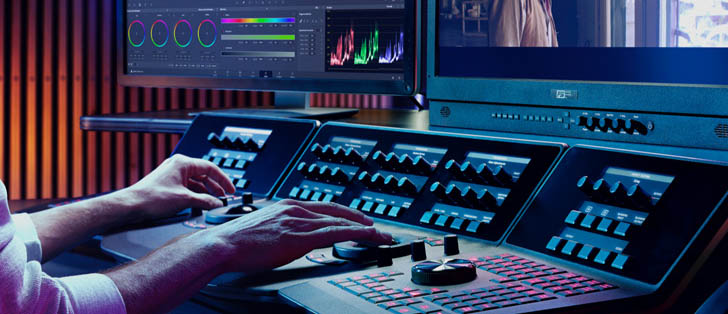In collaboration with Youtuber AramK, we bring you a series of Davinci Resolve 16 tutorials to help you get your next video project off the ground.
How to color grade like a pro
Now that we’ve covered the basic tools in Davinci Resolve, it’s time to get started with some real movie magic! Color grading is at the heart of any professional video. It determines the video’s look and feel and can even influence the viewer’s attention. Of course, the post-production workflow is only part of the picture. You also need the right kind of footage. We’ll come back to that topic later in this tutorial.
Today we revisit the node-based workflow and dive deeper into the color grading process. Youtuber AramK shows us how we can make a simple shot stand out. We will also learn how to bring our viewer’s attention to the characters.
Looking for a particular topic?
- Settings (1:50)
- Widescreen setup (2:08)
- Node 1 – balance (2:54)
- Node 2 – white balance (3:15)
- Node 3 – look (4:14)
- Node 4 – fine tuning the curves (7:20)
- Bringing attention to the characters (nodes five and six) (8:16)
- Going back to make adjustments (11:04)
Getting the right footage for the perfect color grade
The quality of your color grading depends on the quality of your footage. All contemporary cameras capture high resolution footage, many at 4K or higher. Resolution is important to your footage. The greater the resolution, the more flexibility you have to make changes. When it comes to color, though, there is another factor that is even more important – dynamic range.
Dynamic range is about how many colors your camera can pick up. The greater the dynamic range, the more room you have to manipulate those colors. Most modern cameras offer high resolution, but only a few offer above-average dynamic range. Some of these are available to the average consumer, but most are in the professional price range.
Cinema cameras stand out because they offer a greater dynamic range. Since the camera captures more colors, you can do more with them in the post-production room.
The difference between a cinema camera and a standard digital camera becomes clear when you look at the far ends of the color spectrum. In a camera with a high dynamic range, there is usually a smooth transition in color. In other cameras, the highlights go white and shadows go black.
[side-by-side photos showing a blown out picture and an HDR picture]
The footage used in today’s tutorial was shot on a RED Helium cinema camera. Perhaps you don’t have access to something of that caliber. Don’t let that stop you – you can still experiment by using stock footage.
RawFilm is a stock footage website that specializes in cinematic footage produced with authentic RED cinema cameras in high resolution (8K, 5K, 4K, etc.). The videos are compatible with Davinci Resolve and are available with or without color grading. Members get access to free sample videos at 5K and 8K resolutions.
Sign up to RawFilm for cinematic stock footage you can use for your Davinci Resolve project!
Do you have any questions? Share them in the comments below!
We’ll see you next week with another Davinci Resolve tutorial!
Resources

